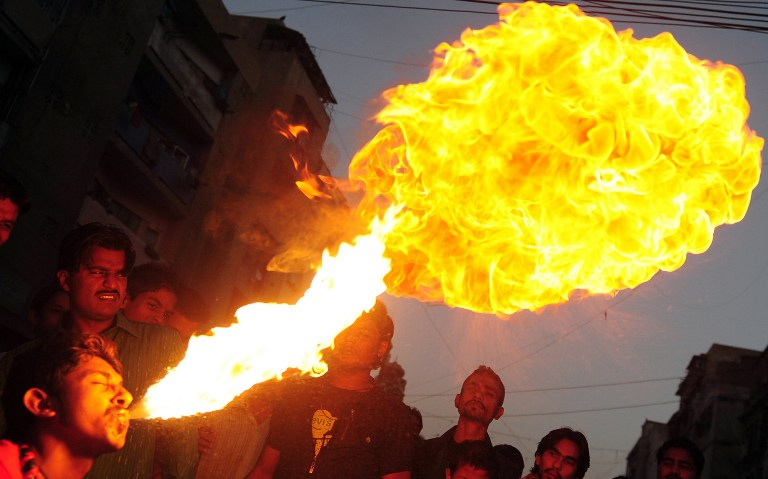Date first published: 13/11/2018
Key sectors: all
Key risks: civil unrest; political violence; political stability
Mass religious protests led by Cleric Khadim Hussain Rizvi ground Pakistan’s major cities to a halt. The government initially refused to back down, but within days found itself surrendering to extremists’ demands. The opposition attacked the government for its response to the protests. This describes the events of November 2017, over the rewording of the ‘Khatm-i-Nabuwwat’ oath taken by elected officials. Much happened over the ensuing year, including a change in government. Yet in late October and early November 2018, protests once again erupted and the government again surrendered.
On 30 October, the Supreme Court acquitted Asia Bibi, a Christian woman sentenced to death in 2010 for blasphemy. The Court found that there was no evidence of wrong doing on her part and the verdict did not undermine blasphemy laws. Nonetheless, Rizvi’s Tehreek-i-Labbaik Pakistan (TPL), which organised the November 2017 protests, called for mass protests and for traffic around the country to be blocked. One of the party’s other leaders claimed that the Supreme Court justices deserved to be killed for the decision. There were mass protests in Karachi, Lahore, Islamabad, Peshawar and Multan. Islamabad’s main high war blocked. There were some reports of violence against the police and civilians. Islamabad’s Red Zone was sealed off from the public with paramilitary forces deployed in strategic areas across the country. Mobile services were suspended in most major cities.
Prime Minister Imran Khan, who had promised to defend blasphemy laws, came out in support of the court. He called the protesters ‘enemies of the state’ and claimed that his government would stand by the decision of the court. But after three days of continued demonstrations, the TLP reached an agreement with the federal and Punjab governments to end the protests. The PTI government agreed to refrain from objecting to a review of the Supreme Court judgement and ‘initiate a legal process’ to put Asia Bibi’s name on the exit control list, effectively preventing her from leaving the country. Yet even if the PTI’s capitulation was less dramatic than the Pakistan Muslim League-Nawaz’s surrender to Rizvi in November 2017, it was a worrying sign that the rule of law and political process could be hijacked by a small group of religious extremists. If the government is seen to backtrack on its deal, protests could again erupt.
The power of religious extremists has been years in the making. For religious groups blasphemy has been a central issue. Almost 80 people have been killed in attacks motivated by blasphemy accusations since 1990, including Punjab governor Salman Taseern in 2011. The climate of violence around blasphemy likely shocked lower-court judges into convicting Asia Bibi. However, religious parties have generally been small in Pakistan and have rarely had direct parliamentary power at a federal level. Yet over the last several years, it has become clear that religious groups have mobilised and organised. The November 2017 protests catapulted TLP into a national movement becoming the vanguard of the anti-blasphemy cause. The TLP is still relatively small, winning on 4.2 per cent of the vote in the 2018 general election, but it has a committed base of followers that it can activate.
Pakistan’s military and security forces are unwilling to challenge religious protesters. Indeed, religious extremists may have extensive support within the military. Imran Khan may have been hoping that his credibility with the religious establishment could calm the protesters, but he too found himself having to accept a weakening of the rule of law to maintain a temporary order.



